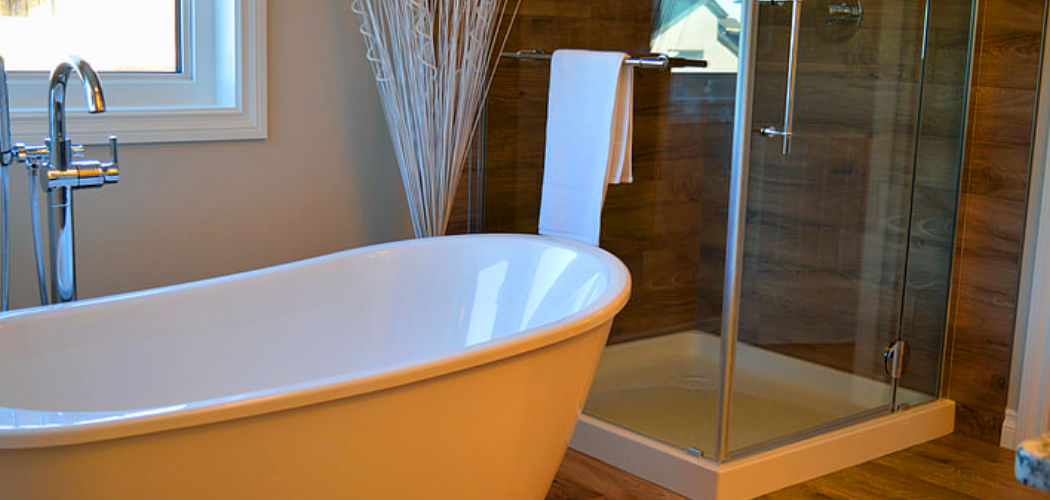Over time, acrylic bathtubs can show signs of wear, including fading, staining, or looking dated. Instead of replacing the tub, refinishing it with paint is a cost-effective way to rejuvenate its appearance and enhance your bathroom’s aesthetic. Painting an acrylic bathtub, however, requires proper preparation and technique to ensure long-lasting results. A well-executed paint job ensures durability, water resistance, and a professional finish. Using the correct materials and methods helps prevent common issues such as peeling or chipping over time.
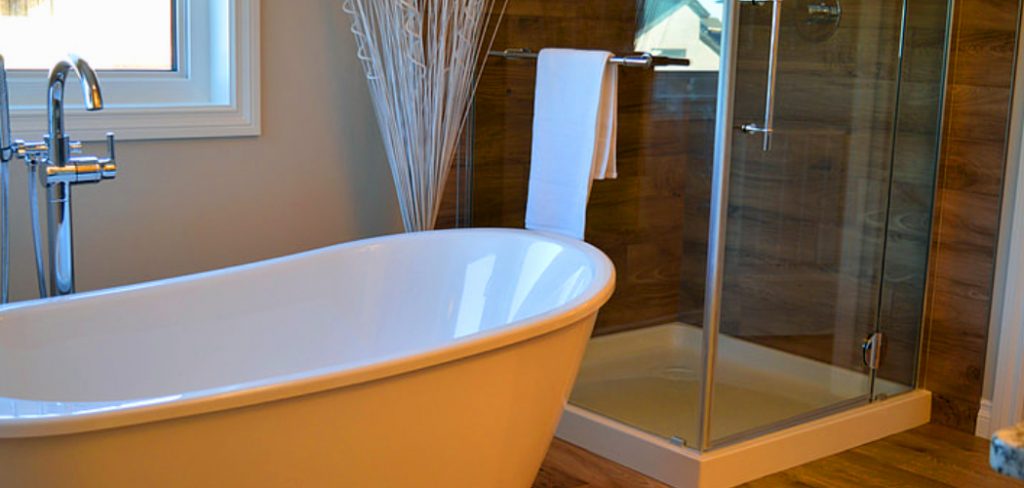
This article is designed to serve as a comprehensive step-by-step guide on how to paint an acrylic bathtub, allowing you to tackle this DIY project with confidence and achieve excellent results. Whether you want to modernize your bathroom or restore an old tub, the following guide will make the process straightforward and reliable.
Choosing the Right Paint and Materials
Best Paint for Acrylic Bathtubs
When it comes to painting an acrylic bathtub, selecting the right type of paint is crucial for achieving a durable and smooth finish. Epoxy-based acrylic paint or specialized tub refinishing kits are the best options, as they are designed to adhere to the slick surface of acrylic and withstand moisture, heat, and regular use. Standard wall paints or generic spray paints should be avoided, as they lack the necessary adhesion and durability to withstand the unique conditions of a bathtub environment.
Essential Materials Needed
To ensure a successful refinishing project, it is important to have the right materials on hand. The following are essential:
- Sandpaper (220-400 grit): For roughening the surface and removing imperfections.
- Painter’s Tape: To protect edges and surrounding areas from paint splatters.
- Cleaning Supplies: Trisodium phosphate (TSP) and alcohol for thoroughly cleaning the surface.
- Paintbrushes, Rollers, or Spray Gun: For applying paint evenly to the tub surface.
- Respirator Mask and Gloves: To ensure safety during the painting process.
Why Surface Preparation is Key
Surface preparation is a critical step in painting an acrylic bathtub. Proper cleaning, sanding, and taping ensure the paint adheres correctly, producing a smooth, professional-looking finish. Neglecting this step can lead to issues such as peeling, cracking, or uneven coverage, affecting both the appearance and longevity of the refinished bathtub.
Prepping the Bathtub for Painting
Proper preparation is essential to ensure your painting project yields a smooth and durable finish. Follow these steps to get your bathtub ready for painting:
Step 1: Deep Cleaning the Tub
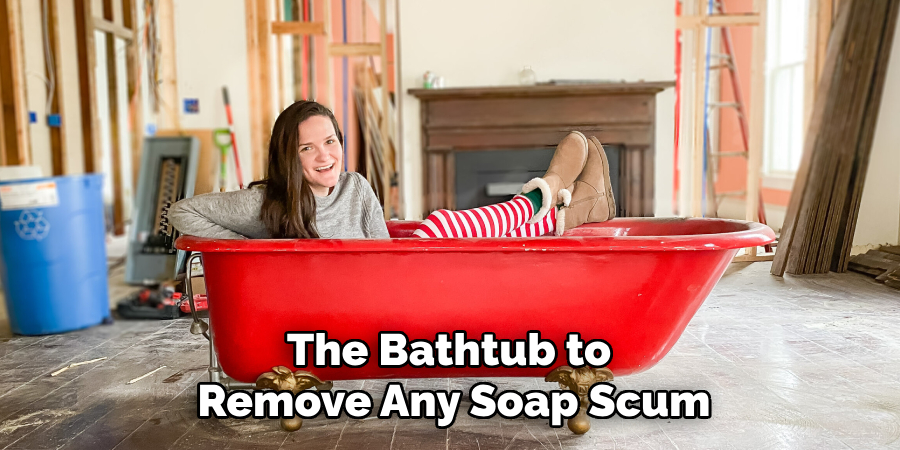
Begin by thoroughly cleaning the bathtub to remove any soap scum, grime, or oils that could interfere with paint adhesion. Use trisodium phosphate (TSP) to break down buildup and ensure a spotless surface effectively. After scrubbing, rinse the tub thoroughly with water to remove any residue. Allow the surface to dry completely before proceeding to the next step.
Step 2: Sanding the Surface
Once the tub is clean and dry, lightly sand the entire surface using fine-grit sandpaper (220-400 grit). This step helps to create a rough texture, which is critical for the paint to bond effectively. Pay extra attention to glossy or smooth areas, as these are particularly challenging for paint adhesion. After sanding, use a damp cloth to carefully wipe away all dust and particles, ensuring a clean surface for optimal results.
Step 3: Protecting Surrounding Areas
Protect all areas around the bathtub to prevent accidental damage or paint splatters. Use painter’s tape to cover edges, fixtures, faucets, and drains. Take extra care to apply tape neatly for clean lines when painting. Additionally, lay drop cloths or plastic sheeting on the floor and surrounding areas to shield them from drips and spills. Proper masking will save you time during cleanup and contribute to a professional-looking finish.
Applying the Primer
Choosing the Right Primer
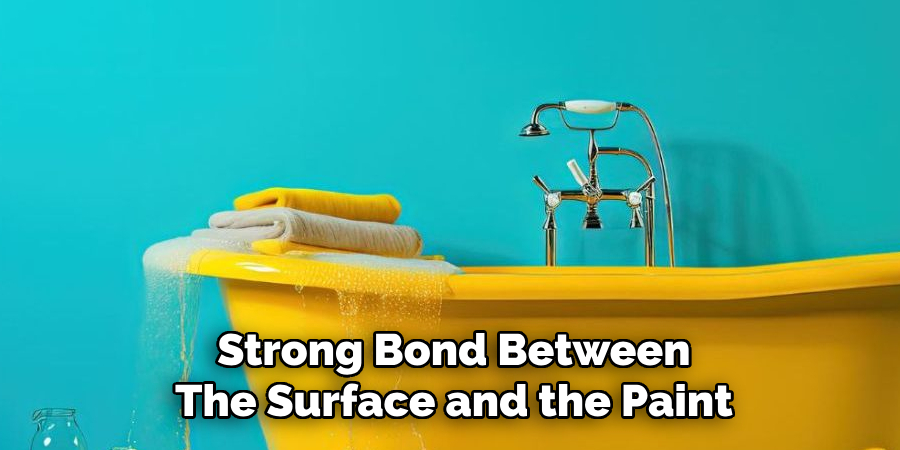
Select a high-bond primer specifically formulated for acrylic and plastic surfaces for the best results. This type of primer ensures a strong bond between the surface and the paint, increasing durability and longevity. Choosing a primer designed for bathtub refinishing is crucial for achieving professional-quality results.
Step 1: Applying the Primer Coat
Begin by applying an even coat of primer using a spray gun or a foam roller. A spray gun generally provides the most consistent finish, but a foam roller can be a practical alternative for small or confined areas. Work methodically, ensuring all areas are covered without overloading the surface. Be cautious to avoid drips or uneven patches. Once applied, allow the primer to dry completely as per the manufacturer’s instructions. This drying period is essential to ensure proper adhesion and a smooth finish.
Step 2: Sanding Between Coats (if needed)
After the first primer coat has dried, inspect the surface for any uneven areas or rough spots. If required, lightly sand the primer using fine-grit sandpaper (320-400 grit). Sanding between coats helps to create an ultra-smooth base that enhances the final paint application. Once sanding is completed, remove all dust residues with a clean, dry cloth before proceeding to the painting stage.
How to Paint an Acrylic Bathtub: Painting the Acrylic Bathtub
Step 1: Selecting a Painting Method
For optimal results, selecting the appropriate painting method is essential. A spray gun is highly recommended as it provides a smooth and even application, reducing the likelihood of streaks or uneven coverage. Alternatively, a foam roller can be used, especially when applying epoxy paint. A foam roller evenly distributes the paint across the surface, making it a practical choice for those without access to a spray gun. Whichever method you choose, ensure the tools are clean and in good condition to achieve a professional finish.
Step 2: Applying the First Coat
Begin by applying the first coat of paint in thin, even strokes. Whether using a spray gun or roller, maintain a consistent application to avoid drips and patchy areas. It’s important to work systematically and methodically, covering the entire surface. Thin coats not only prevent paint from running but also dry more effectively. Follow the manufacturer’s instructions for the required drying time, as this will vary depending on the type of paint and environmental conditions. Allowing sufficient drying time is crucial to ensure proper adherence and durability.

Step 3: Applying Additional Coats
Typically, 2-3 coats of paint are necessary for full and even coverage. After the first coat has dried completely, apply the subsequent coats using the same technique of thin, even strokes. Be patient and allow proper drying time between each coat to achieve the best results. Taking the time to apply additional coats ensures a durable, long-lasting finish and enhances the overall appearance of the bathtub.
Sealing and Curing the Paint
Step 1: Applying a Clear Sealant (if needed)
Some refinishing kits include a clear topcoat or sealant as the final step for added protection and a glossy finish. If your kit includes this, carefully apply the sealant using the same technique as the paint—thin, even strokes to avoid buildup or streaking. A clear sealant enhances the durability of the paint and helps protect it from scratches, stains, and long-term wear. Be sure to follow the manufacturer’s instructions for application and drying times. This additional layer ensures that your refinished bathtub will look pristine for years to come.
Step 2: Allowing Proper Curing Time
After the final coat or sealant has been applied, allowing the paint to fully cure before using the tub is essential. Typically, the curing process takes about 48-72 hours, though checking the refinishing kit’s specific guidelines is best. During this time, please avoid using the bathtub, scrubbing its surface, or placing heavy objects inside it. Allowing proper curing time ensures the paint adheres and hardens properly, creating a smooth and resilient finish. These steps will result in a freshly refinished tub that is attractive and functional.
Maintaining a Painted Acrylic Bathtub
Properly maintaining a painted acrylic bathtub is essential to preserve its appearance and durability. Here are some tips to keep it in pristine condition:
Use Gentle Cleaners
When cleaning your tub, always opt for mild, non-abrasive cleaners. Harsh chemicals and abrasive scrubbing pads can damage the painted surface, causing it to dull or even peel. A soft sponge or cloth paired with a gentle soap or bathtub cleaner is ideal for maintaining the finish without introducing unnecessary wear.
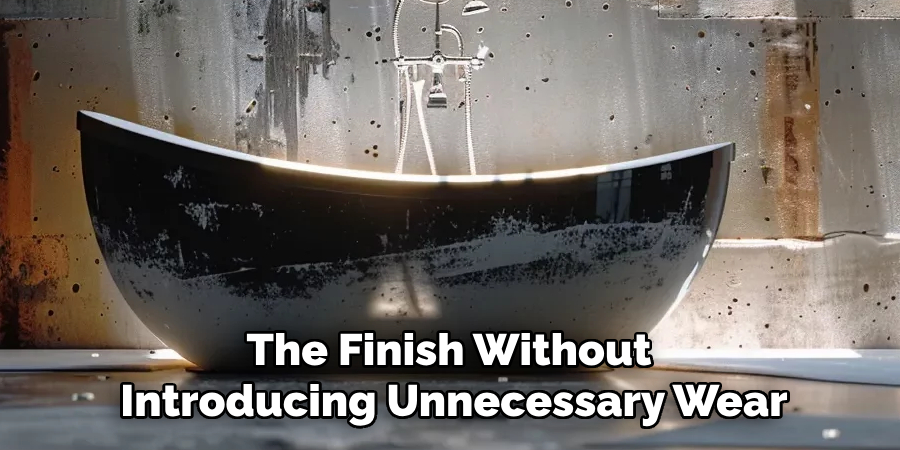
Preventing Chips and Scratches
Be cautious with heavy or sharp objects in the bathtub to avoid chips and scratches. Consider placing a rubber mat at the bottom of the tub to protect against accidental damage from dropped items or shifting objects. This small precaution can greatly extend the life of the painted surface.
Regular Touch-Ups
Over time, minor scratches or chips may occur despite your best efforts. Keep a small amount of leftover epoxy paint from the refinishing process for touch-ups as needed. Following the same application technique used during refinishing, you can easily patch small imperfections and maintain the seamless look of your tub.
By following these steps, you can ensure your painted acrylic bathtub remains beautiful and functional for years to come.
Conclusion
Painting an acrylic bathtub is rewarding when approached with patience and precision. Proper preparation, using high-quality materials, and carefully applying each layer are key steps to achieving a professional finish. Allowing each coat to dry fully is crucial for ensuring durability and longevity. By following these detailed steps on how to paint an acrylic bathtub, you can transform your tub into a smooth, attractive centerpiece that elevates your bathroom. With regular maintenance and small touch-ups as needed, your painted bathtub will remain beautiful and functional for years to come.

